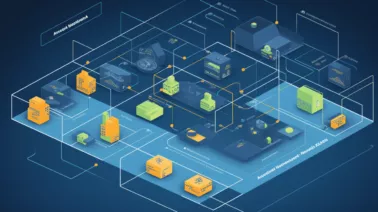Jean Luc Godard said, “Sometimes reality is too complex. Stories give it form.” And while a quote from the French New Wave Film director might be an unusual place to start a blog about one of Udacity’s instructors, Michael Dedrick would, no doubt, agree with the sentiment.
“Storytelling is key to all aspects of teaching and working in tech,” says Michael. “From the portfolios, you create while searching for a job, to the curricula you create while teaching a class, everything is a story. Your portfolio tells your story to employers. It shows how you created the work. And, ultimately, you hope your story is more engaging and more pleasing to the employer than the stories told by others who are competing for the same job!”
Given Michael’s background, his love of the story is, perhaps, understandable. He has a deep-seated love of film and the arts to match his knowledge in tech. His journey to being an instructor at Udacity began at the University of Toronto’s Film School. “I always had a love of education and I’d studied animation and design in University, so I taught at Toronto’s Film School for a year. And then, in the early 2000’s I began to notice a change in the internet; storytelling was becoming far more important with graphics and animation revolutionizing the web and so I made the move into the industry.”
Michael first worked for his brother’s animation, web design, and motion graphics company before a storied career, where he worked for heavyweights like Apple and IBM as their Lead iOS Mobile User Experience Designer. He’s now at Google, where he works as a UX Designer. So, in many regards, he’s the perfect fit to teach the high-fidelity prototyping to post-launch analysis course part of Udacity’s UX Designer Nanodegree program.
Teaching at Udacity
“Teaching at Udacity has been amazing,” says Michael. “I really enjoyed it. I got a chance to work with some really great professionals who are experts at creating a curriculum. They really allowed me the opportunity to build a course from scratch and design it in a way that was reflective of the work that I do in the industry and the work that I’ve done for many years.”
But it wasn’t all fun and games. “Building the course at Udacity was challenging but rewarding,” he says. “While it’s a very empowering feeling, knowing that thousands of students are going to learn from my course, it also means there’s incredible pressure. You want to do right by the students. You want them to learn. You want them to get fantastic jobs. So I was very conscious of the responsibility.”
Support for Instructors
But, says Michael, generous to a fault, “I never felt like I was on my own. I was teamed with an amazing group of people that really helped flesh out the curriculum. Watching it go all the way from an embryonic concept to a finished course and seeing it evolve over time was really rewarding for me. And that was all the more amazing because the whole thing was done remotely! The first time I met my Udacity colleagues was when I went to their production office for an amazing week of on-camera work in the studios!”


